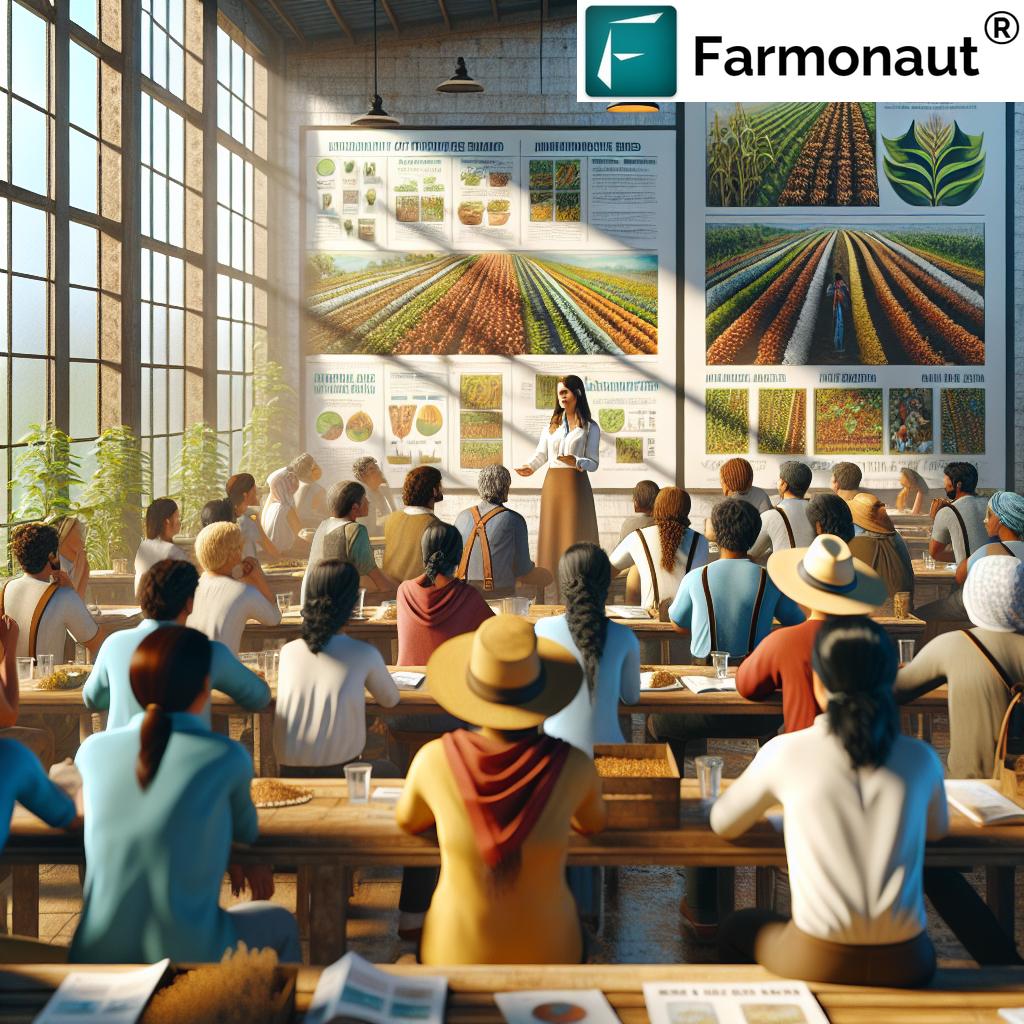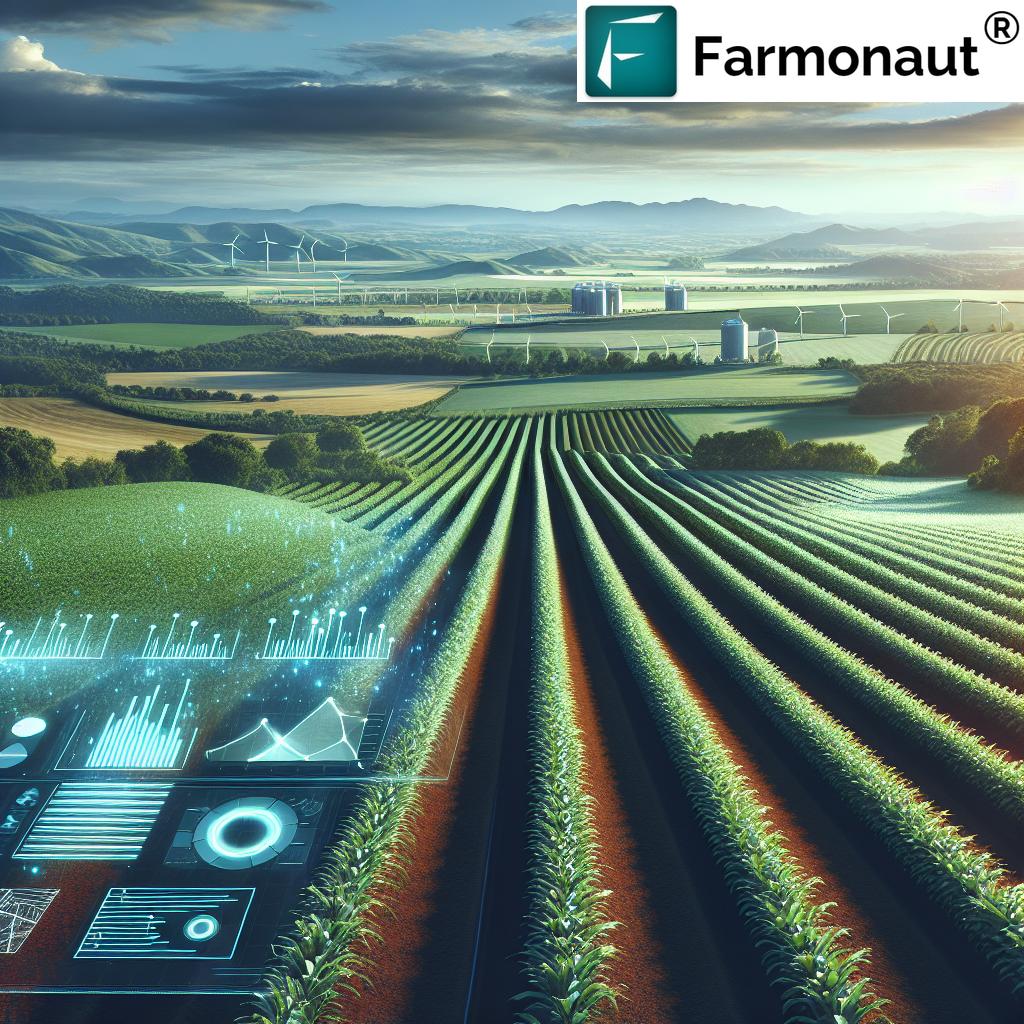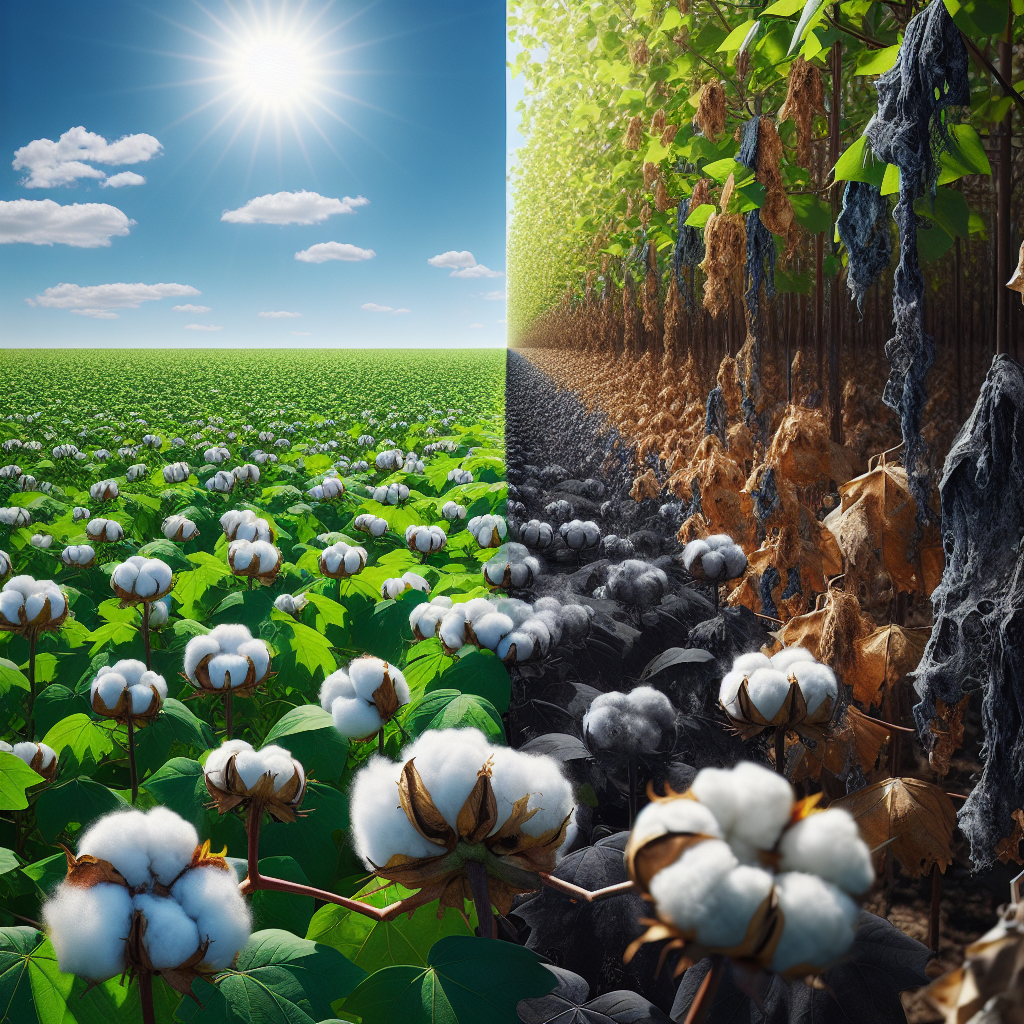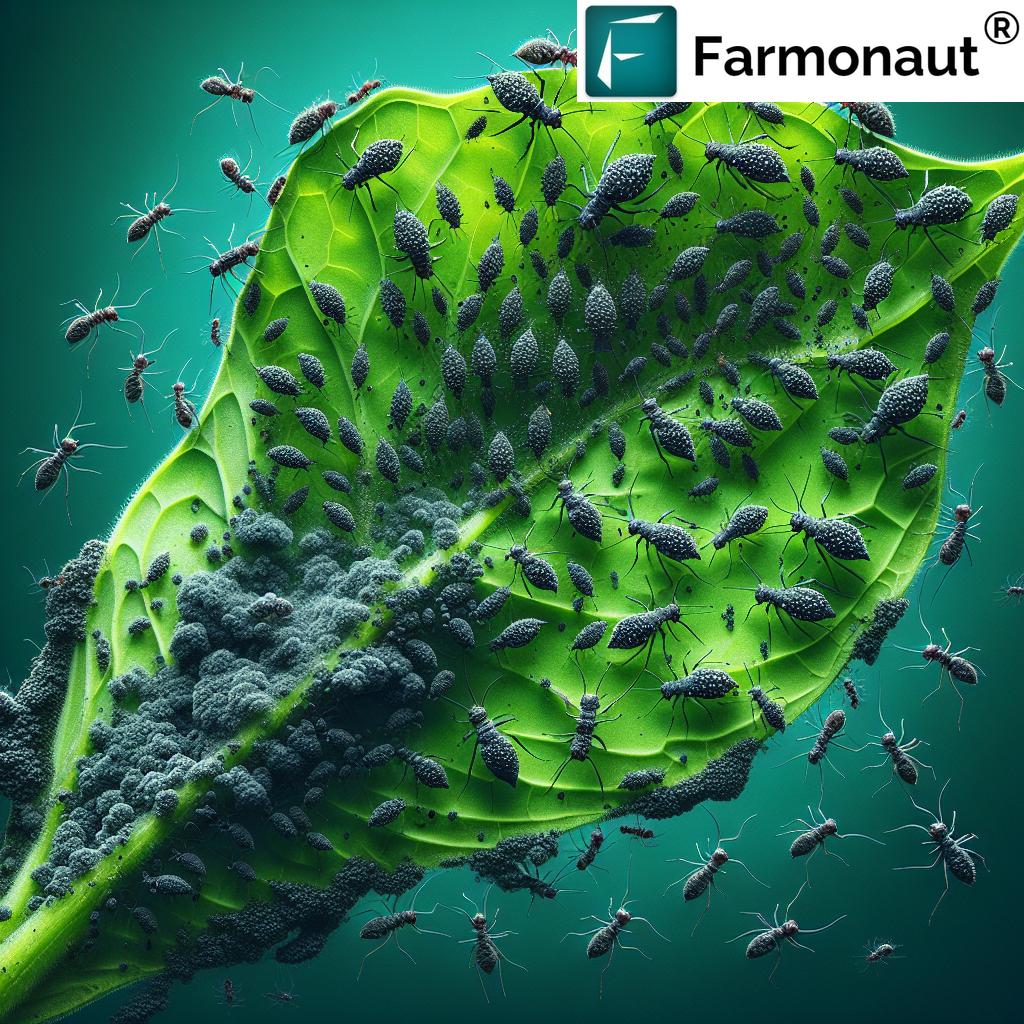Farming & Agriculture Tools 2025: Top Innovative Solutions
“Over 60% of farms worldwide will adopt AI-powered machinery by 2025, revolutionizing crop management and resource use.”
Introduction & Summary: The Evolution of Farming & Agriculture Tools in 2025
The landscape of farming & agriculture tools in 2025 is radically different from what it was just a decade ago. As we continue to advance, the sector is rapidly evolving, driven by technological advancements, sustainability concerns, and the growing need for higher efficiency in agriculture. Central to this transformation is a new generation of agriculture farming tools—ranging from sophisticated, AI-powered equipment to smart sensors and digital farm management platforms.
The latest agricultural farming tools are enhancing productivity, reducing labor intensity, and promoting sustainable practices, allowing farmers, agronomists, and industry stakeholders to remain competitive and environmentally responsible. This comprehensive guide explores the current and emerging agriculture farm tools shaping the future, with a deep-dive into digital platforms, smart equipment, and the latest advances you need to know to meet modern food demands and achieve better yields.
The Evolution of Agriculture Farming Tools
Agriculture has undergone a profound shift over centuries. Traditionally, farming relied heavily on manual labor and simple hand tools—think of hoes, sickles, and rudimentary plows. These implements laid the foundational practices and soil-preparation techniques for early crop production.
However, as global food demands increased and operations became more complex, there was a need for more sophisticated and efficient machinery. The advent of modern farm equipment—such as powered plows, cultivators, and harvesters—marked the first major leap forward, fundamentally changing labor intensity and scale.
Entering 2025, the arsenal of agriculture farm tools has expanded to include:
- Digitally integrated machinery (IoT and AI-enabled devices)
- Smart sensors that monitor soil, water, and crop health in real time
- Autonomous drones for scouting, spraying, and planting
- Cloud-based platforms for precision management
- Eco-friendly machinery reducing carbon footprint
With this blend of traditional and digital innovation, farming & agriculture tools are now at the epicenter of a new era—one that demands sustainability, resource optimization, and data-driven decision making.
Categories of Agriculture Farm Tools in 2025
In 2025, tools agriculture can be classified broadly into several key categories, each with its own technological upgrades and smart functionalities:
1. Soil Preparation Tools: The Foundation of Modern Agriculture Farm Tools
Soil is the foundation for strong yields, making soil preparation one of the most crucial steps in farming. In 2025, modern plows, harrows, rotavators, and cultivators are not just upgraded for power but are equipped with:
- Sensors that assess moisture, composition, and compaction in real time
- Cloud-connected control systems for adjusting tillage depth and pattern
- AI-driven recommendations on rotational practices for soil health and biodiversity
By integrating sensor technology and data analysis, farmers can make precise adjustments to minimize soil disturbance, conserve resources, and achieve better yields.
For those considering the environmental impact of traditional tilling, Farmonaut’s Carbon Footprinting solution provides real-time insights into emissions, supporting data-driven shifts to more sustainable practices.
2. Planting and Seeding Tools: Precision Meets Efficiency in Agriculture Farm Tools
Planting with precision is key to maximizing seed density and crop health. In 2025, advanced seed drills and smart planters feature:
- Embedded GPS for precise seed placement and depth adjustment
- Automated control systems to accommodate changing soil and weather conditions
- Variable rate seeding based on real-time soil fertility maps
These tools reduce waste by ensuring optimal seed density and placement, directly enhancing germination rates and overall productivity.
With Farmonaut’s Large Scale Farm Management module, plantation managers can plan and monitor seeding with unmatched accuracy across vast farming operations.
3. Irrigation Tools: Reducing Water Waste in Modern Farming & Agriculture Tools
As water scarcity becomes more acute, irrigation tools need to deliver both efficiency and sustainability. The best technologies in 2025 integrate:
- Drip irrigation systems equipped with moisture sensors
- Automated timers and valve controls for scheduling
- Smart irrigation algorithms pulling real-time weather data and soil moisture levels
The result? Optimal water use, reduced costs, and healthier crops. Integrated platforms ensure that farmers can conserve water resources while still maximizing yields.
For example, crop plantation and advisory solutions streamline irrigation scheduling, guided by on-ground and satellite data.
“Smart irrigation systems in 2025 are projected to reduce water usage by up to 35% on technologically advanced farms.”
4. Crop Protection Tools: Sustainable Pest & Disease Management in Agriculture Farm Tools
Crop protection is now as much about environmental responsibility as it is about yield preservation. Drones and automated sprayers are leading the charge in 2025 by:
- Monitoring crop health with multispectral cameras
- Detecting pests and diseases early via AI analysis of drone imagery
- Enabling precision chemical usage by targeting only affected areas, reducing excess agitation
- Supporting integrated pest management (IPM) by tracking both pest levels and beneficial insects
This approach leads to less chemical input, lower cost, and minimal environmental impact, while maintaining or improving crop yields. Farmonaut’s Crop Loan and Insurance tools further support farmers by enabling verified claims linked to pest and disease management insights.
5. Harvesting Tools: Robotics, Automation & The Future of Labor in Agriculture
In crops where manual labor was previously indispensable (for example, berries or tomatoes), autonomous harvesting robots are now transforming efficiency. 2025 sees the use of:
- Robotic pickers guided by AI-powered computer vision
- Mechanical harvesters that reduce labor intensity and minimize post-harvest loss
- Automated combines and threshers with real-time sensor monitoring for optimal performance
Digital management systems log and analyze yield data per row, per plot, and even per seed for continued optimization.
6. Post-Harvest and Storage Tools: Minimizing Losses & Maximizing Shelf Life in Agriculture
After harvesting, post-harvest handling and storage are critical to prevent loss and poor quality. 2025’s leading agricultural tools offer:
- Automated sorting and grading machines powered by AI for real-time quality control
- Cold storage units powered by renewable energy sources
- Sensors to monitor storage temperature, humidity, and gas levels
All of this translates to reduced food wastage, improved earnings, and a significantly smaller environmental footprint. For supply chain transparency, Farmonaut’s Blockchain-Based Traceability solution guarantees that every crop’s journey can be tracked from farm to shelf.
Comparative Table: Top Farming & Agriculture Tools 2025
To make informed decisions about your next agriculture farming tools purchase, compare key features, efficiency, and sustainability below:
| Tool Name | Function/Purpose | Smart Technology Used | Est. Efficiency Gain (%) | Sustainability Rating (1-5) | Price Range (USD) |
|---|---|---|---|---|---|
| Smart Plow with Soil Sensors | Soil Preparation (compaction, moisture monitoring) | IoT Sensors, AI Integration | 30-40% | 4.5 | $7,000-$18,000 |
| Autonomous Seed Drill | Precision Seeding, Variable Density | GPS, Automation, Cloud | 25-35% | 4.2 | $15,000-$32,000 |
| Smart Drip Irrigation System | Water Conservation, Automated Scheduling | Moisture Sensors, IoT | 33-40% | 4.7 | $2,500-$7,500 (per hectare) |
| AI-Controlled Crop Drone | Crop Monitoring, Disease/Pest Detection | Multispectral Cameras, AI, IoT | 40-55% | 4.9 | $8,000-$40,000 |
| Autonomous Harvesting Robot | Selective Fruit/Vegetable Harvesting | Robotics, Computer Vision AI | 28-60% | 4.8 | $37,000-$200,000 |
| AI Grading & Sorting Machine | Post-Harvest Sorting, Quality Audit | Machine Learning, Cameras | 20-35% | 4.3 | $10,000-$50,000 |
| Solar-Powered Cold Storage | Preserving Crop Freshness & Reducing Waste | Renewable Energy Tech, IoT Monitoring | 30-48% | 5.0 | $20,000-$100,000 |
| Satellite-Based Farm Management App (e.g., Farmonaut) | Crop Health Monitoring, Resource Optimization | Satellites, Blockchain, AI, ML | 30-60% | 5.0 | $49-$1,500 (subscription-based) |
Digital Agriculture Tools Transforming 2025
The heart of modern agriculture farming tools lies in digital platforms that connect, control, and harmonize all aspects of the agricultural operation. These digital agriculture tools are revolutionizing how farmers plan, monitor, and optimize their farms in 2025:
-
Farm Management Software:
Unified platforms that collect data from field sensors, drones, equipment, and even weather stations. These dashboards allow farmers to view critical data on crop health, input usage, yields, and financials all in one place. -
Precision Agriculture:
Tools leveraging GPS, GIS, drones, and satellite imagery for site-specific management. This empowers farmers to optimize fertilizer, pesticide, and seed usage—reducing resource waste and maximizing output. -
Robotics and Automation:
Autonomous tractors, robotic arms, and UAVs are taking on repetitive and high-labor tasks, improving safety and efficiency across farm operations. -
Advanced Sensor Technology:
Integration of soil sensors, moisture meters, weather stations, and even plant health detectors feed real-time data for improved decision-making.
Farmonaut’s platform, available on web and mobile apps, brings you:
- AI-based advisory tools—get site-specific recommendations instantly
- Real-time moisture, soil, and crop health monitoring—avoid overwatering or unnecessary chemical usage
- Blockchain traceability—boost supply chain transparency
- Scalability from smallholders to large-scale agribusinesses
Are you a developer or researcher? Access Farmonaut’s satellite and weather data via our public API and explore possibilities with our API Developer Docs.
Sustainable and Eco-Friendly Tools & Practices
With mounting environmental concerns, sustainability is no longer optional. It is integral to every farming & agriculture tool choice in 2025. Leading-edge practices now incorporate:
- Electric and solar-powered machinery—replacing fossil-fuel equipment, cutting emissions
- Conservation tillage, no-till, and cover cropping tools to preserve soil structure and biodiversity
- Advanced sensors and AI-driven decision systems for smarter resource management
- Carbon footprint tracking tools—such as Farmonaut’s solution—for compliance and climate-resilient farming
Modern tools agriculture must deliver both economic success and ecological stewardship. These technologies help farmers simultaneously maximize yields, reduce resource usage, and preserve environmental health.
Farmonaut: Leading the Precision Agriculture Revolution in 2025
At Farmonaut, we see ourselves at the forefront of the agricultural farming tools revolution. Our mission is to make precision agriculture both affordable and accessible to farmers worldwide—integrating innovative technology and data-driven insights into traditional practices for modern results.
-
Satellite-Based Crop Health Monitoring:
With multispectral satellite imagery, our platform allows farmers to monitor crop health, soil moisture, and other key metrics, helping reduce water and fertilizer usage while optimizing yield. -
AI-Powered Jeevn Advisory System:
Our AI tool analyzes field and weather data to provide personalized crop management strategies, improving on-field decision-making for better crop outcomes. -
Blockchain-Based Traceability:
Our integrated traceability ensures transparency, safety, and quality in the agricultural supply chain from farm to shelf. -
Fleet and Resource Management:
Our resource and fleet management tools help optimize logistics and reduce machinery operation costs across wide farm landscapes. -
Carbon Footprint Tracking:
Our carbon footprinting tools allow agricultural businesses to monitor and reduce their impact—helping to future-proof operations and comply with evolving environmental regulations.
Farmonaut’s platform is available through flexible subscriptions to suit everyone, from independent smallholders to large agribusinesses and even government bodies. Compare our pricing below, explore our features, or access services through easy web, Android, or iOS apps.
Frequently Asked Questions (FAQ)
- What are the most important agriculture farming tools in 2025?
- The most critical tools are smart sensors for soil and crop health, autonomous machinery (tractors, seeders, harvesters), advanced irrigation systems, drones for monitoring and crop protection, and cloud-based farm management platforms.
- How do digital farming tools maximize yields?
- Digital platforms aggregate data from sensors, drones, and equipment. This real-time information helps optimize planting, watering, fertilization, and harvesting schedules—maximizing productivity while minimizing waste.
- What role do drones play in modern agriculture?
- Drones monitor crop health, detect pest/disease outbreaks, perform targeted spraying, and even assist with planting. Their aerial vantage point and AI-driven imaging greatly improve early detection and optimize resource use.
- How can farmers reduce environmental impact with new tools?
- Modern solutions include electric/solar-powered equipment, carbon tracking tools like Farmonaut Carbon Footprinting, and conservation tillage practices that maintain soil structure and biodiversity.
- Which Farmonaut tools help with financial access and insurance?
- Farmonaut’s Crop Loan and Insurance verification uses satellite and AI data for transparent, evidence-based loan and insurance processes, helping farmers get timely credit and reliable coverage.
- Can small farms benefit from all these smart tools?
- Absolutely! With scalable, subscription-based apps and affordable satellite-powered solutions from Farmonaut, even small-scale farmers can access the benefits of precision agriculture and digital management.
Conclusion: Staying Ahead with Smart & Sustainable Agriculture Farm Tools
As the landscape of farming & agriculture tools continues to evolve rapidly in 2025, embracing innovation and sustainability is more critical than ever. Tools agriculture have become a symphony of tradition and technology, leveraging IoT, AI, robotics, satellite imaging, and blockchain to increase productivity, reduce labor, and ensure environmental stewardship.
By integrating smart equipment, automated systems, digital monitoring, and eco-friendly practices, farmers and agronomists are empowered to meet rising food demands without compromising on sustainability. Understanding the full range of agricultural farming tools available is critical not only for profitability but also for shaping a resilient and sustainable food system for generations to come.
In this era of technological advancements, Farmonaut stands ready to support you with advanced, intuitive, and impactful digital solutions. Explore our apps, API, and developer tools, and experience the future of farming today.
Stay updated. Stay efficient. Stay sustainable.













